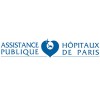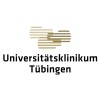
Adapted Physical Activity in a Chemotherapy Ambulatory Care Unit: Feasibility and Impact on Fatigue,...
Adapted Physical Activity and CancerPhysical activity has demonstrated efficacy in cancer prevention and improves quality of life and outcome in cancer survivors. Patients undergoing chemotherapy, especially those with advanced disease, may have symptoms leading to inactivity. Adapted physical activity (APA) among those patients could improve their tolerance to the treatment, and thereby their quality of life. APA could be beneficial to patients with curable disease as well as patients undergoing palliative chemotherapy. Some studies suggest that fighting against loss of muscle mass could lead to a survival benefit. However, APA is not established in daily practice and has not yet been evaluated in a chemotherapy ambulatory care unit. Primary aim of the study is to assess feasibility of an APA program in a chemotherapy ambulatory care unit of digestive, lung, hematological and dermatological cancers Secondary aim is to measure the impact of an APA program on fatigue, anxiety, depression and handgrip strength in patients beginning chemotherapy or targeted therapy for a digestive, lung, hematological or dermatological cancer, of any stage.

Prevalence, Severity and Determinants of Cancer-related Fatigue (CRF) in Asian Breast Cancer Patients...
FatigueChemotherapy2 moreThere is a paucity of studies that focus on the symptom burden of cancer patients in Singapore, particularly the clinical effects of cancer-related fatigue (CRF). Knowing that early-stage breast cancer is curable, it is of paramount importance to evaluate the clinical and biological determinants of lingering symptoms in breast cancer survivors so that appropriate psychosocial interventions can be formulated.

Developing Models for Fatigue Monitoring in Obstetrics and Gyne- Cology Residents Using Wearables...
FatigueThis study is set out to observe heart-rate and related bio-metric indicators in Obstetrics and Gynecology residents during their duty hours, together with self-reporting of fatigue and tasks performances, in order to model possible relationships between the two.

Fatigue and Skeletal Muscle Impact in Severe Axial Spondylarthritis
SpondylarthritisFatigue1 moreAxial spondyloarthropathy (SpA) is the most common inflammatory rheumatism (1% of the general population) with important medico-economic consequences. Fatigue is a major feature of SA. It can be defined as a feeling of reduced muscle capacity, lack of energy and exhaustion. The fatigue reaches an abnormally high level (fatigue severity score (FSS) ≥4, called severe fatigue in this protocol) in more than two thirds of patients with SA. Skeletal muscle repercussions are present during SA. It is characterized by a decrease in exercise capacity independently of pain and ankylosis but is associated with a decrease in strength and muscle mass, the importance of which varies from one study to another. The link between fatigue (subjective sensation) and the skeletal muscular impact (objective) of SA has never been studied.

Change of Fatigue and Physical Fitness in Hospitalized Hematology Patients
Acute LeukemiaThe purposes of this study are to (1) explore the severity of symptom of leukemia patients experienced before and after chemotherapy in hospital, (2) investigate the trajectories of the fatigue and physical fitness, and their related factors, and (3) the correlation between fatigue and physical fitness

Stress at Work and Infectious Risk in Patients and Caregivers
Occupational Exposure to BloodHealthcare-associated Related Infections2 moreIn hospitals, the improvement of working conditions is often considered secondarily to patient satisfaction. Previous studies, showing statistically significant relationships, suggested the impact of hospital departments' organization (staff / patient ratio, bed distribution, caregiver's assignment), of the work environment, and the working conditions on the infectious risk at the hospital departments. In addition, organizational hospital constraints and the organization of care could equally have a major impact on the physical and psychological health of care workers (stress, fatigue, job satisfaction). To date, available data suggest that determinants of occupational stress and fatigue are multifactorial. This research aims to develop an interdisciplinary approach to link two phenomena that are often studied independently while they are closely intertwined: working conditions and infectious risk in hospitals departments. Their main objective is to study the relationship between stress and caregiver fatigue at the work, organizational determinants and infectious risk for patients (healthcare-associated infections: HAIs) and for caregivers (blood exposure accidents: BEAs). The secondary objective is to analyze how the individual characteristics of the staff, the characteristics of their employment, and the overall organization in the hospital departments where they work interact to explain their physical and psychological state of health, on the one hand, and their behavior face to work (absenteeism, turnover and hand hygiene) on the other hand. The ultimate goal of this research is to be able to propose organizational strategies aimed at both reducing the probability of occurrence of healthcare-associated infections and preventing occupational risks for caregivers.

Evaluation of Physical and Cognitive Industrial Workload
Work-Related ConditionPhysical Stress1 moreThe main aim of the project is to evaluate a novel upper body exoskeleton during simulated industrial work. In this stage of the project, a study analysing the physical and mental load during occupational work will be carried out. High risk tasks will be identified in the field and simulated in lab-setting to analyse physical and mental load using physiological and biomechanical data.These will include, but will not be limited to, non-ergonomic postures, for example performing operations above the head or reaching in front of, to the side of, or behind the body; flexing the arms for extended periods of time; and bending or twisting the torso to lift an object from low or distant locations. Important items to assess in this task are the frequency and duration of tasks and activities, lifting characteristics, perceived physical effort and work-induced fatigue.

Fitness Trackers During and After Oncological Treatments
CancerPhysical Activity1 moreThe overall goal of the present trial is to evaluate the patients' compliance for wearing a commercially available fitness tracker during and after oncological treatments.

A Perspective Study of Cancer-related Fatigue in Gynecologic Cancer Patients Under Chemotherapy...
Gynecologic CancerChemotherapyChemotherapy is effective and most often used to treat cancer. The common drugs used on gynecologic cancer treatment include platinum compounds like cisplatin and carboplatin, which combined with taxane, topotecan, or liposomal doxorubicin to date. The most side effects of chemotherapy are esophagitis, mucositis, anxiety, nausea, vomiting, abdominal convulsion, painful swallowing, fatigue and sometimes diarrhea, dizziness, allergy (rash, itching), neutropenia, thrombocytopenia (fever, chills, cough, pain), anemia and bleeding. Cancer-related fatigue (CRF), an indicator of quality of life, is a highly prevalent symptom (75-80%) during treatment and in patients with advanced cancer, yet is sometimes ignored. Fatigue affected their life more than pain. Proposed criteria for CRF have been adopted for inclusion in the International Statistical Classification of Disease and Related Health Problems, Tenth Revision, Clinical Modification (ICD-10-CM). Therefore, more in-depth researches on CRF are needed in Taiwan. Patients with CRF in need of improvement, commonly use nutrition supplements, acupuncture, healthy food, massage, drugs, etc. Hence, patients with CRF could consult their vital physician for an appropriate treatment. Furthermore, several drugs could be chosen to relieve CRF, including anemia drugs, antipsychotics or Astragalus polysaccharides extract. The objective of this retrospective study is to collect and analyze the medical records of gynecologic cancer patients who who had received chemotherapy with or without prescription drug treatment for cancer-related fatigue in the Department of Obstetrics & Gynecology of Tri-Service General Hospital from December 1st, 2015 to Dec 31st, 2018. This study will compare the fatigue improvement profile by different chemotherapy regimens, tumor stage, CRF treatment, etc. and investigate the association between the profile of fatigue improvement and fatigue cluster (weight loss and other symptoms of functional assessment of cancer therapy). This study will also collect blood specimens and analyze the correlation of the cytokine profile and/or immune profile.These results will supply physicians with more understanding about CRF, and help them to enhance the quality on gynecologic cancer care to being perfected in the future.

Autoimmunity in Myalgic Encephalomyelitis/Chronic Fatigue Syndrome (ME/CFS)
Myalgic EncephalomyelitisChronic Fatigue SyndromeThis study investigates whether there is an immune response directed against gut microbes or food and parts of the body in severe Myalgic Encephalomyelitis/Chronic Fatigue Syndrome (ME/CFS) patients.
